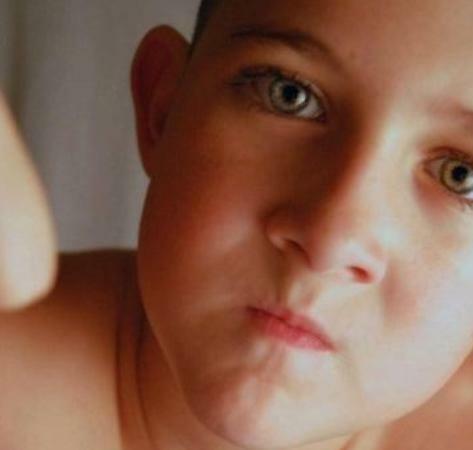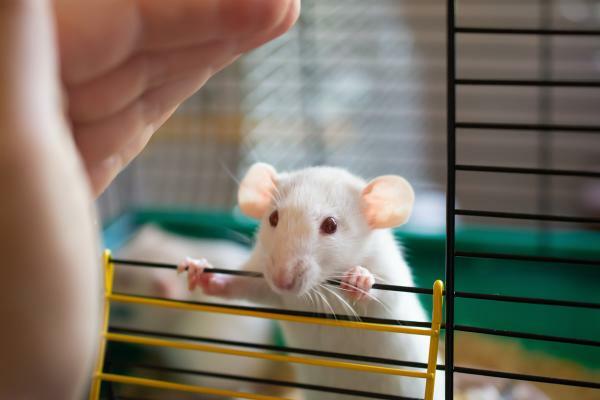
The Conduct disorder (according to DSM-IV) with the publication of DSM-5 it has been renamed Disorder of Conduct. It refers to the recurrent presence of distorted, destructive and negative behaviors, in addition to transgressing social norms, in the behavior of the individual.
Index
- Criteria for Conduct Disorder
- Associated symptoms and disorders
- Symptoms dependent on culture, age and sex
Criteria for Conduct Disorder.
A persistent and repetitive pattern of behavior in which the basic rights of others or important age-specific social norms are violated, manifested by the presence of three (or more) of the following criteria during the last 12 months and at least one criterion during the last 6 months:
Aggression to people and animals
- Often brags, threatens, or intimidates others
- often starts physical fights
- have used a weapon that can cause serious physical harm to others (eg. e.g. bat, brick, broken bottle, razor, gun)
- has shown physical cruelty to people
- has manifested physical cruelty to animals
- has stolen by confronting the victim (p. g., assault, snatching bags, extortion, armed robbery)
- forced someone into sexual activity
Destruction of property
- deliberately set fires with the intention of causing serious damage
- deliberately destroyed other people's property (other than setting fires)
Fraudulence or theft
- violated someone else's home, house, or car
- often lies to obtain goods or favors or to avoid obligations (ie, "cheats" others)
- has stolen objects of a certain value without confronting the victim (p. eg, shoplifting, but no break-ins or destruction; fakes)
Serious rule violations
- often stays away from home at night despite parental prohibitions, initiating this behavior before the age of 13
- have run away from home overnight at least twice, living in their parents' home or in a foster home (or just once without returning for a long period of time)
- tends to play truant at school, starting this practice before the age of 13
B. Conduct disorder causes clinically significant impairment in social, academic, or work activity.
C. If the individual is 18 years of age or older, they do not meet criteria for antisocial personality disorder.
Specify the type based on the starting age:
Type of infantile onset: at least one of the criteria characteristics of conduct disorder begins before age 10
Type of adolescent onset: absence of any criteria characteristic of conduct disorder before 10 years of age
Specify the severity:
Mild: few or no behavior problems exceed those required to establish the diagnosis and behavior problems cause only minimal harm to others
Moderate: the number of behavior problems and their effect on other people are intermediate between "mild" and "severe"
SeriousVarious behavior problems exceed those required to establish the diagnosis or behavior problems cause considerable harm to others.
The essential characteristic of social disorder is a persistent and repetitive pattern of behavior in which The basic rights of others or important social norms appropriate to the age of the subject are violated (Criterion TO). These behaviors are divided into four groups: aggressive behavior that causes physical harm or threatens other people or animals (Criteria A1-A 7), non-aggressive behavior causing loss or damage to property (Criteria A8 A9), fraud or theft (Criteria A1O-A12) and serious violations of regulations (Criteria A13-A15). Three (or more) characteristic behaviors must have appeared during the last 12 months and at least one behavior will have occurred during the last 6 months. The behavior disorder causes clinically significant impairment of social, academic or work activity (Criterion B). Conduct disorder can be diagnosed in individuals over 18 years of age, but only if the criteria for antisocial personality disorder (Criterion C) are met. The behavior pattern usually occurs in different contexts such as home, school or community. Since subjects with conduct disorder tend to minimize their behavioral problems, the clinician must often rely on other informants. However, the informant's knowledge of the child's behavioral problems may be limited by inadequate supervision or the child's failure to disclose them.
Children or adolescents with this disorder often initiate aggressive behaviors and react aggressively to others. They may display boastful, threatening or intimidating behavior (Criterion Al); initiating frequent physical fights (Criterion A2); use a weapon that can cause serious physical harm (eg. eg, bat, brick, broken bottle, razor, or pistol) (Criterion A3); being physically cruel to people (Criterion A4) or animals (Criterion A5); stealing in the face of a victim (eg, assault, snatching bags, extortion, or armed robbery) (Criterion A6); or forcing another to engage in sexual activity (Criterion A7). Physical violence can take the form of rape, assault or, in rare cases, murder.
Deliberate destruction of other people's property is a hallmark of this disorder and may include setting fire Deliberately with the intention of causing serious harm (Criterion A8) or deliberately destroying the property of other persons of different modes (p. eg, breaking car glass, vandalism at school) (Criterion A9).
Fraud or theft is common and can include breaking into another person's flat, house, or car (Criterion A1O); subjects often lie or break promises in order to obtain goods or favors, or avoid debts or obligations (p. g., ripping off others) (Criterion A11); or steal objects of certain value without confronting the victim (p. eg, shoplifting, counterfeiting) (Criterion A12).
Characteristically, subjects with this disorder also incur serious violations of the norms (p. g., schoolchildren, family members). Children with this disorder and before the age of 13, remain away from home at night despite the prohibitions of their parents (Criterion A13).
There may be house leaks at night (Criterion A14). To be considered a conduct disorder symptom, the fugue must have occurred at least twice (or only once if the subject did not return for an extended period of time). Escape episodes that occur as a direct consequence of physical or sexual abuse are not typically scored on this criterion. Children with this disorder may truant from school frequently, starting before the age of 13 (Criterion A15). In older subjects, this behavior is frequently manifested with absences from work without justifying reasons.
Subtypes
Depending on the age of onset of the disorder, two subtypes of conduct disorder have been established (childhood-onset type and adolescent-onset type). The subtypes differ in terms of the characteristic nature of the behavioral problems they present, evolutionary course and prognosis, and sex ratio. Both subtypes can present mild, moderate, or severe. When evaluating the age of onset, the information should preferably be obtained from the person concerned and from their caregivers. Since many of the behaviors are sometimes hidden, caregivers may exhibit fewer symptoms than are real and overestimate the age of onset.
Child start type. This subtype is defined by the onset of at least one characteristic of conduct disorder before age 10 years. Subjects with the type of infantile onset are usually male, frequently deploy physical violence on others, have problematic relationships with their peers, can have manifested Oppositional Defiant Disorder in early childhood and usually present with symptoms that meet all criteria for DI before the puberty. These individuals tend to experience persistent Conduct Disorder and develop a Disorder antisocial personality in adulthood more often than subjects with an onset type Teen.
Type of adolescent start. This subtype is defined by the absence of characteristics of conduct disorder before 10 years of age. Compared with subjects with the infantile onset type, they are less likely to display aggressive behaviors and to have more normative relationships with peers (although they frequently pose behavioral problems in the company of others). These individuals are less likely to suffer from persistent conduct disorder or to develop antisocial personality disorder in adult life. The ratio of males to females with conduct disorder is lower in the adolescent-onset type than in the childhood-onset type.
Gravity Specifications
Mild. Few or none of the behavioral problems exceed those required to establish the diagnosis, and these problems cause relatively little damage to others (p. g., lying, playing truant, being out of the house at night without permission). Moderate. The number of behavior problems and their effect on other people are intermediate between mild and severe (p. g., robberies without confrontation with the victim, vandalism). Serious. There are many behavior problems that exceed those required to establish the diagnosis, or the behavior problems cause considerable harm to other people (p. g., rape, physical cruelty, use of weapons, robberies with confrontation with the victim, destruction and break-ins).
Symptoms and associated disorders.
Descriptive characteristics and associated mental disorders. Subjects with conduct disorder may have poor empathy and little concern for the feelings, wishes, and well-being of others.
Especially in ambiguous situations, aggressive subjects affected by this disorder frequently misperceive the intentions of others, interpreting them as more hostile and threatening than they really are, responding with aggressions that in this case they consider reasonable and justified.
They can be insensitive, lacking appropriate feelings of guilt or remorse. It is sometimes difficult to assess whether the remorse experienced is genuine, since these individuals learn that the manifestation of guilt can reduce or avoid punishment. Individuals with conduct disorder may be willing to give out information about their peers and try to accuse others of their own misdeeds. Self-esteem is usually low, although the subject may project an image of toughness. Poor tolerance for frustration, irritability, emotional outbursts, and recklessness are frequently associated characteristics. Accident rates appear to be higher in subjects with Conduct Disorder compared to others without this disorder. Conduct disorder is often associated with early initiation of sexual activity, drinking, smoking, using illegal substances, and engaging in reckless and dangerous acts. The use of illegal substances can increase the risk of persistence of conduct disorder. Conduct disorder behaviors can lead to school suspensions or expulsions, adjustment problems labor, legal disputes, sexually transmitted diseases, unwanted pregnancies and physical injuries produced in accidents or fights.
These problems can prevent them from attending regular schools or living with parents or in a foster home. Suicidal ideation, suicide attempts and completed suicides occur more frequently than expected. Conduct disorder can be associated with a lower than average intellectual level. Academic performance, especially in reading and other verbal skills, is often below the expected level in depending on the age and intelligence of the subject, being able to justify the additional diagnosis of learning disorder or communication. Attention deficit hyperactivity disorder is common in children with conduct disorder. Conduct disorder can also be associated with one or more of the following mental disorders: disorders learning disorders, anxiety disorders, mood disorders, and related disorders. substances. The following factors predispose to the development of conduct disorder: parental rejection and abandonment, childhood temperament difficult, inconsistent educational practices with harsh discipline, physical or sexual abuse, lack of supervision, early life in institutions, frequent changes of caregivers, large family, association with a group of delinquent companions and certain types of family psychopathology.
Laboratory findings. In some studies, a lower heart rate and skin conductance have been observed in subjects with conduct disorder than in others without this disorder. However, physiological arousal levels are not diagnostic of this disorder.
Symptoms dependent on culture, age and sex.
With some frequency, the possibility that the diagnosis of Conduct Disorder is not applied correctly has been raised to subjects coming from environments where undesirable behavior patterns are sometimes considered protective (p. g., threats, poverty, crime). According to the DSM-IV definition of mental disorder, the diagnosis of Conduct Disorder should only be applied when the behavior in question is symptomatic of an underlying dysfunction of the individual and is not simply a reaction to the social context righ now.
In addition, young immigrants from countries ravaged by war, who have experienced a history of behavior may be necessary for their survival in that setting, do not necessarily justify a diagnosis of a disorder. dissocial. Consideration of the social and economic context in which the undesirable behaviors occurred can be helpful to the clinician.
Symptoms of the disorder vary with age as the individual develops more physical strength, cognitive skills, and sexual maturity. Less serious behaviors (p. g., lying, shoplifting, physical fights) tend to come first, while others (eg. g., burglary) do so later.
Typically, the most serious behavior problems (eg. g., rape, robbery with confrontation with the victim) tend to manifest themselves ultimately. However, there are notable differences between individuals, some of whom engage in the most harmful behaviors at a very young age.
Conduct disorder, especially childhood type, is much more common in males.
Differences between the sexes are also seen in specific types of behavioral problems.
Boys with a diagnosis of social disorder frequently incur robberies, fights, vandalism, and school discipline problems. Women diagnosed with conduct disorder are prone to lying, truancy, running away, drug use, and prostitution. While the aggression that involves a passionate confrontation is usually more displayed by men, women tend to practice more behaviors that do not involve confrontation.
Prevalence
The prevalence of social disorder seems to have increased in recent decades, and may be higher in urban centers than in rural areas.
The rates vary widely depending on the nature of the population studied and the methods of analysis: in men under 18 years of age, the rates range between 6% and 16%; in women, the rates range between 2 and 9%. Conduct disorder is one of the most frequently diagnosed in mental health centers for children both on an outpatient basis and in hospitalization.
Course
The onset of conduct disorder can occur around 5 or 6 years of age, but is usually seen in late childhood or early adolescence. It is very rare for it to start after 16 years of age. The course of conduct disorder is variable. In a majority of subjects, the disorder subsides in adult life. However, a substantial proportion continue to exhibit behaviors in adulthood that meet the criteria for antisocial personality disorder. Many subjects with conduct disorder, particularly those of the adolescent-onset type and who present mild and few symptoms, reach a social and work adaptation in adult life adequate. An early onset predicts a worse prognosis and an increased risk in adult life for antisocial personality disorder and substance use disorders. Individuals with Conduct Disorder are at risk of later experiencing Conduct Disorder. mood, anxiety disorders, somatoform disorders and drug use disorders substances.
Family pattern
Studies of twins and adoptions show that conduct disorder has both genetic and environmental components. The risk of conduct disorder is increased in children with a biological or adoptive parent with antisocial personality disorder or with a sibling with conduct disorder. The disorder also appears to be more common in children of biological parents with alcohol dependence, mood disorders, mood or schizophrenia, or biological parents with a history of attention deficit hyperactivity disorder or dissocial.
Differential diagnosis
Although Oppositional Defiant Disorder includes some of the features seen in Conduct Disorder (eg. g., disobedience and opposition to authority figures), does not include the persistent pattern of the most serious, which imply the violation of the basic rights of other people or of the social norms of the age of the subject. When the subject's behavioral pattern meets the criteria for both Conduct Disorder and Oppositional Disorder defiant, the diagnosis of Conduct Disorder should take precedence and Oppositional Defiant Disorder should not get diagnosed.
Although children with attention deficit hyperactivity disorder often exhibit hyperactive and impulsive behavior that can be disruptive, this behavior does not in itself violate age-specific social norms and therefore often does not meet the criteria conduct disorder. When the criteria for attention deficit hyperactivity disorder and conduct disorder are met simultaneously, both diagnoses should be established.
Irritability and behavioral problems often occur in children or adolescents with a manic episode. They are usually distinguished from the pattern of behavioral problems typical of conduct disorder by the episodic course and the accompanying symptomatic characteristics of a manic episode. If the criteria for both disorders are met, both the diagnosis of Conduct Disorder and Bipolar I Disorder should be recorded. The diagnosis of adjustment disorder (with behavioral disturbance or with mixed disturbance of emotions and behavior) should be taken into account if the problems clinically significant behavioral disorders that do not meet the criteria for another specific disorder develop in clear association with the onset of stress psychosocial. Some isolated behavior problems that do not meet criteria for conduct disorder or Adjustment disorder can be coded as antisocial behavior in childhood or adolescence (v. Other Problems That May Receive Clinical Attention, page 699). Conduct disorder is only diagnosed if the behavioral problems represent a repetitive and persistent pattern that is associated with alterations in social, academic or work activity.
In subjects over 18 years of age, a diagnosis of conduct disorder will only be applied if the disorder does not also meet criteria for antisocial personality disorder. The diagnosis of antisocial personality disorder cannot be attributed to subjects under 18 years of age.
Relationship with the ICD-10 Research Diagnostic Criteria
Although different in format, the DSM-IV and ICD-10 diagnostic criteria for conduct disorder are almost identical.
This article is merely informative, in Psychology-Online we do not have the power to make a diagnosis or recommend a treatment. We invite you to go to a psychologist to treat your particular case.
If you want to read more articles similar to Criteria for Conduct Disorder, we recommend that you enter our category of Child psychopathology.

